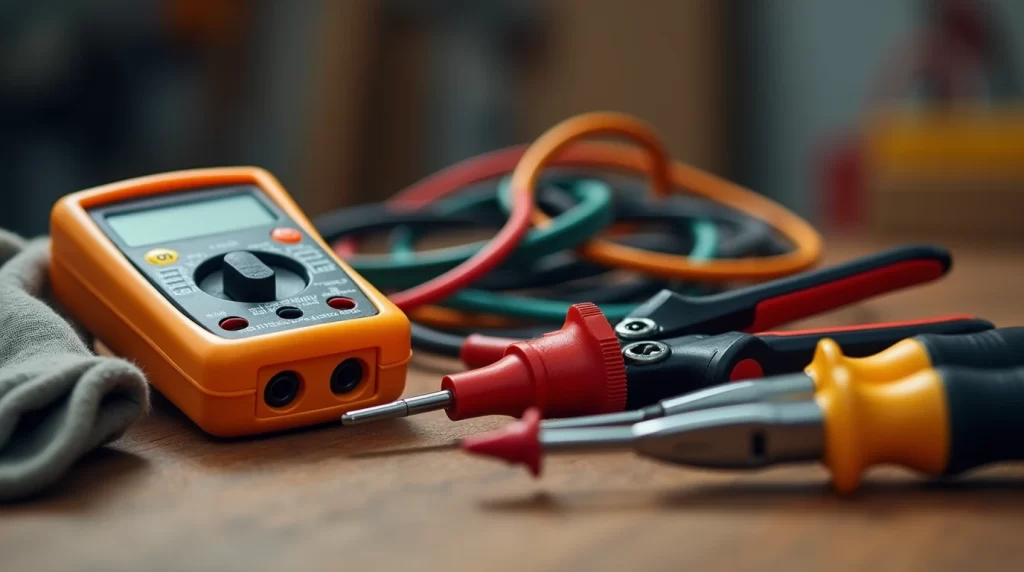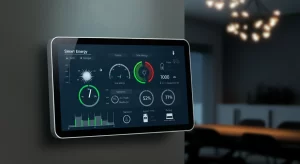Why Having the Right Tools Matters
Whether you’re replacing a faulty switch, installing a new outlet, or performing routine checks on your home’s wiring, having essential tools for basic electrical maintenance is non-negotiable. The correct tools not only make the job easier and more efficient but also ensure your personal safety and help maintain compliance with electrical codes. Inadequate or improper tools can lead to damaged components, incomplete repairs, or even serious electrical hazards.
Safety First: Personal Protective Equipment (PPE)
Before you begin any electrical project, prioritize safety by using the appropriate Personal Protective Equipment (PPE). This includes:
- Insulated Gloves: Protect your hands from electric shock and sharp edges.
- Safety Glasses or Goggles: Shield your eyes from sparks and debris.
- Proper Footwear: Wear rubber-soled, non-conductive shoes.
- Long-Sleeve, Flame-Resistant Clothing: Reduce the risk of burns or direct contact with energized parts.
For more detailed electrical safety guidelines, review Electrical Code Updates and Safety Standards to ensure your practices align with the latest regulations.
Essential Tools for Basic Electrical Maintenance
Below are the must-have tools that will simplify and secure your home electrical maintenance tasks:
1. Multimeter
What it does: A multimeter measures voltage, current, and resistance. It’s an all-in-one testing device that helps you diagnose a wide range of electrical issues, from dead outlets to faulty wiring connections.
Why it’s essential:
- Quickly identify live circuits before starting work.
- Troubleshoot problems like voltage drops and irregular currents.
Pro Tip: Choose a multimeter with a backlit display and auto-ranging capabilities for easier readings. Check the owner’s manual of your equipment for recommended testing settings.
2. Non-Contact Voltage Tester
What it does: A non-contact voltage tester (or voltage pen) detects the presence of live voltage without making direct contact with exposed wires.
Why it’s essential:
- Enhances your safety by confirming if a circuit is energized, without needing to touch metal conductors.
- Useful for quick checks in switches, outlets, and junction boxes.
3. Insulated Screwdrivers
What they do: Insulated screwdrivers, featuring handles rated for high-voltage work, are designed to prevent electrical shock while tightening or loosening screws in terminals, outlets, and switches.
Why they’re essential:
- Provide protection against accidental contact with live parts.
- Help maintain secure, vibration-resistant connections.
4. Insulated Pliers and Wire Cutters
What they do: Insulated pliers and wire cutters allow you to grip, twist, and cut wiring safely.
Why they’re essential:
- Reduce risk of electric shock through insulated handles.
- Provide a firm grip for stripping wire insulation, bending conductors, and trimming excess wire length.
5. Wire Strippers
What they do: Wire strippers remove insulation from cable ends without damaging the conductor.
Why they’re essential:
- Ensure clean, damage-free stripping, improving the reliability of your electrical connections.
- Make projects like changing outlets or switches more efficient.
6. Electrical Tape and Heat-Shrink Tubing
What they do:
- Electrical Tape: Insulates and secures wire connections, preventing short circuits and exposed conductors.
- Heat-Shrink Tubing: Provides a durable, moisture-resistant seal over soldered joints or splices, offering long-term reliability.
Why they’re essential:
- Maintain safe, stable connections.
- Improve the longevity and reliability of wiring repairs.
7. Cable Pullers and Fish Tapes
What they do: Fish tapes and cable pullers help guide wires through walls, conduits, and tight spaces during new installations or upgrades.
Why they’re essential:
- Facilitate running new circuits or replacing old wiring without unnecessary demolition.
- Save time and labor by simplifying the wire routing process.
8. Flashlight or Headlamp
What it does: Provides illumination when working in dimly lit areas, such as attics, crawl spaces, or circuit panels.
Why it’s essential:
- Enhances visibility and accuracy when identifying wire colors, labels, and breaker positions.
- Improves safety, reducing the risk of miswiring due to poor lighting.
Additional Accessories and Recommendations
- Cable Ties: Keep wiring neat and organized.
- Label Maker or Marker: Properly label circuits, panels, and wiring for future reference.
- Spare Batteries: Keep extra batteries for your multimeter or voltage tester.
For more maintenance best practices, explore our article on DIY: How to Test and Replace Batteries in Your Smoke Detectors. Proper upkeep of detectors ensures an additional layer of electrical and fire safety in your home.
Staying Compliant with Electrical Standards
Adhering to local and national electrical codes (such as the U.S. National Electrical Code – NEC) is essential to ensure safe and lawful modifications. Compliant installations reduce the risk of hazards and potential legal issues if you decide to sell your home. For official guidelines and best practices, consider referencing reputable organizations like the National Fire Protection Association (NFPA).
When to Call a Professional
While assembling these essential tools for basic electrical maintenance equips you for many do-it-yourself tasks, there are times when professional assistance is warranted:
- Major Panel Upgrades: Involving complex load calculations.
- Tripped Breakers That Repeatedly Fail: May indicate deeper system issues.
- Mysterious Burning Odors or Flickering Lights: Could signal hazardous wiring faults.
In these scenarios, investing in a certified electrician ensures both safety and long-term peace of mind.
Conclusion
Building a complete toolkit with essential tools for basic electrical maintenance empowers you to handle routine fixes and simple improvements safely. From the reliability of a multimeter to the protection offered by insulated screwdrivers and non-contact voltage testers, each tool supports a smoother, safer DIY experience.
Always prioritize safety, follow code guidelines, and know your limits. Armed with the right tools and knowledge, you can maintain your home’s electrical systems with confidence and security.
Ready to take the next step or need professional advice? Contact Kendrick Electric for expert guidance, assessments, and assistance in ensuring your home’s electrical stability.



